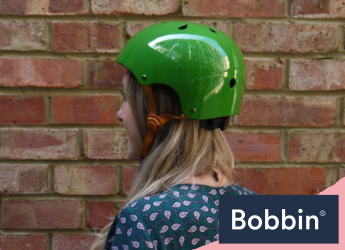How Should Your Bike Helmet Fit?
Welcome, fellow cycling enthusiasts! This discussion could make a difference between a carefree ride and a disastrous accident: the proper fit of your bike helmet.
Whatever your cycling level is, one thing remains constant: safety never goes out of style. Riding a bicycle without a helmet is simply unthinkable. But did you know that wearing an ill-fitting helmet can be just as dangerous?
In this guide, we will learn the importance of a well-fitted bike helmet. And, of course, we’ll help you find the right fit so you’ll be pedalling confidently toward adventure!
So, let’s buckle up (literally!) and pedal on this journey to ensure your head is safeguarded every time you hit the road or trail.
The Importance of Wearing a Helmet
Safety first, always! When it comes to biking, there’s no compromise when safeguarding your head.
Kids bike helmets and adult bike helmets are not just accessories; they are your lifeline on two wheels. Did you know that helmets reduce the risk of head injuries by up to 85%? It’s a fact backed by numerous studies and statistics.
Every cyclist should be aware of how wearing helmets can prevent severe head trauma during accidents. Remember that strapping on a well-fitted helmet isn’t just a precaution. It’s your key to a safer and more enjoyable biking experience. Pedal smart, stay protected, and keep the thrill alive!
Head Measurement
A properly fitted cycle helmet maximises protection and guarantees comfort throughout your ride. This is where measuring your head comes into play. With the correct measurement, you can select the right size that will snugly cradle your head.
To measure your head, follow these simple steps:
- Grab a flexible measuring tape and wrap it around your forehead, just above your eyebrows.
- Ensure the tape is level and snug but not too tight.
- Take note of the circumference in centimetres.
Keep in mind that helmet sizes can vary between brands and models. We recommend referring to the manufacturer’s size chart for the best fit. This general helmet size guide from Bobbin makes an excellent example.
Remember, a well-fitted helmet is your ultimate defence on the road!
Helmet Sizing Guidelines
When it comes to helmet sizes, the cycling world caters to diverse head dimensions. Typically, helmets are available in small, medium, large, and sometimes extra-large sizes.
Here’s a general sizing chart to help you determine your size:
- Small: 52-56cm
- Medium: 56-59cm
- Large: 59-62cm
- Extra-Large: 62cm and above
While a sizing chart provides a good starting point, trying on helmets in person helps. Every brand and model differs in shape and padding, affecting how they conform to your head.
Overall, a helmet should feel snug and comfortable. There should be no pressure points or excessive movement.
Proper Fit Criteria
Here are the key criteria to consider:
Snug fit
The helmet should fit snugly on your head without being too tight or loose. It should not shift or move during riding, providing a secure enclosure.
Level position
The helmet must sit level on your head, with the front edge aligning just above your eyebrows. This ensures proper coverage of the forehead and maximum protection against head injuries.
Secure straps
The chin straps should form a “Y” shape under your ears, and when buckled, they should be comfortably tight. The straps keep the helmet in place during an impact, preventing it from slipping off.
Proper padding
Ensure the helmet’s interior includes padding that feels comfortable against your head. This not only enhances comfort but also provides additional impact absorption.
Trying on the Helmet
(Skylark Bike Helmet Blueberry)
Trying on a helmet properly ensures your safety and comfort while cycling. Here’s a step-by-step guide:
- Place the helmet on your head, ensuring it sits level and just above your eyebrows.
- Buckle the chin straps and adjust them to form a “Y” shape under your ears. The straps should be snug but not too tight.
- Shake your head gently from side to side and front to back. The helmet should stay securely in place, not wobbling or sliding.
- If needed, adjust the helmet’s rear stabiliser or retention system for a customised fit.
- Open your mouth wide; the helmet should press firmly against the top of your head.
- Loosen or tighten the straps and adjust the padding for a perfect fit.
Red flags to watch for:
- Loose fit: If the helmet easily shifts or tilts during movement.
- Excessive pressure: Uncomfortable pressure points on the forehead or temples.
- Poor visibility: The helmet obstructs your vision when looking up or down.
Round-up
The significance of a well-fitted bike helmet cannot be overstated. Wearing one isn’t just about complying with safety regulations. It’s about safeguarding your most precious asset – your head, overall.
Measure your head accurately, consult size charts, and always try on helmets in person. Strive for a snug fit, level position, secure straps, and proper padding. Don’t hesitate to make adjustments for optimal comfort and protection.
Bobbin offers bike helmets for various ages, from toddlers and kids to adults. Shop our range now, and get ready to ride confidently towards endless horizons!












